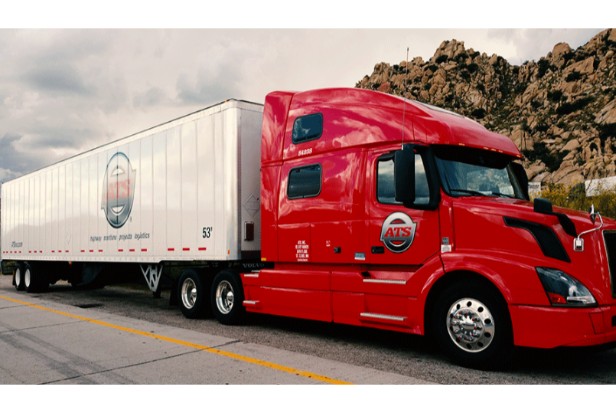
How Many Pallets Fit on a Truck – What to Know About Pallet Size
How many standard pallets can be fit in a fully-loaded truck or trailer is a common query in logistics. A truckload typically contains 25 to 33 pallets, but this number can vary depending on the size of the vehicle. Continue reading to learn how to maximize trailer space and how many pallets fit in various truck sizes.
What is Pallet?
A pallet is a reusable container used in warehouses for picking, storing, transporting, and storing goods. Pallets are made from:
- Trees;
- Plastic;
- Metal
How Many Pallets Are Included in the Truck?
The number of pallets that can fit in the truck is a consideration when creating a logistics plan for the transportation of palletized goods. A trailer must be selected accordingly. Two pallets measuring 1200 mm in length can fit across the standard width of the most popular tented vans, which have a load capacity of up to 20 tons.
Based on this, the width of the useful internal space of the body is 2.5-2.5 m, and the length of road transportation depends on its carrying capacity and can reach 13 m in typical 20-ton trucks.
This type of trailer can hold up to 26 units of palletized cargo when using typical 1200×1000 mm pallets. The capacity of a truck of the same size is increased by up to 33 pieces by using pallets that are 1200x800mm in size, which is the European standard.
How Many Euro Pallets Are in a Full Truckload?
Full truckload (FTL) shipping normally consists of 25 to 33 Euro pallets, with a maximum weight allowance of 24 tonnes. There are various truck types used in FTL shipping, including curtainsider trailers, reefer trailers, mega trailers or high cube trailers, flat platforms, etc. Curtainsider trailers are the most common vehicle since they are designed to transport all kinds of cargo.
When calculating how many Euro or other standard pallets fit in a full truckload, the following factors are considered: (inner) measurements of the truck, the size of the pallets, and the weight of the cargo.
What Are Standard Pallet Sizes?
Standard pallet dimensions vary across the globe when it comes to international shipping. For pallet shipping in Europe, there are 4 standard Euro pallet sizes:
- EUR 1 (most common in Europe): 80 cm x 120 cm (31.50 in x 47.24 in)
- EUR 2 (most common in the UK): 100 cm x 120 cm (39.37 in x 47.24 in)
- EUR 3: 100 cm x 120 cm (39.37 in x 47.24 in)
- EUR 6: 60 cm x 80 cm (23.62 in x 31.50 in)
In North America, there are 2 main standard pallet sizes:
- 101.6 x 121.9 cm (40 in x 48 in)
- 106.7 x 106.7 cm (42 in x 42 in)
How Many Pallets Fit on Different Truck Sizes: from 16′ to 53′
The final number of pallets that fit in a truck depends on whether they are stackable or not. There will only be enough room for one pallet in each floor space if you are loading full pallets. You can count more pallets per floor space, though, if you are loading half-stackable pallets.

Follow the general guide below to calculate how many pallets you can fit in different truck sizes:
| Truck or trailer size | Number of pallets |
| How many pallets fit in a 53′ truck | 26-33 |
| How many pallets fit in a 48′ truck | 24-26 |
| How many pallets fit in a 40′ truck | 23-34 |
| How many pallets fit in a 26′ truck | 12-16 |
| How many pallets fit in a 24′ truck | 12 |
| How many pallets fit in a 20′ truck | 10-11 |
| How many pallets fit in a 16′ truck | 6 |
Depending on the loading method you employ, you may be able to fit fewer or more pallets on a truck. For example, you can fit 26 single-stacked standard pallets on a 53′ truck, but if you use techniques such as “turned” or “pinwheeled loading”, you can load even more.
How to Maximise Trailer Space
You will need to consider the following factors when determining how many Euro or standard pallets can fit in a full truckload and how to maximise trailer space:
- Stackable or non-stackable pallets? Pallets can be stacked on top of one another to maximize trailer space if they can be stacked and are within the permitted height range.
- Standard or non-standard pallets? To determine how many pallets will fit on a truck in a single loading plan, it is important to know your shipment size because trailers have height and width restrictions.
Stackability and size must both be considered. Your pallet won’t fit in the truck, for instance, if it can be stacked but is higher than the vehicle’s height restriction. Similar to this, fragile items that are being shipped should not be stacked, even if they are on standard-sized pallets.
In order to further maximise trailer space, load the largest items first, at the furthest point from the door. It’s simpler to fit smaller items in any available gaps. Items that will need to be unloaded sooner should be packed last.
What Are the Different Ways to Load a Dry Van Trailer?
Unfortunately, there is not enough dry van trailer space to meet the rising demand in our country. Finding a dry van that is available is becoming more difficult, whether the cause is the lack of truck drivers or the ongoing rise in consumerism.
Shippers and trucking businesses have developed strategies for maximizing available dry van trailer space by loading pallets in various ways to combat the pinch the trucking industry is experiencing.
The size and weight of the pallets you use will determine how you should load your palletized cargo.
To move your pallet-based dry van freight, you can either load your trailer:
- Straight
- Turned
- Pinwheeled
- For weight distribution
How Many Pallets Can You Fit in a Dry Van Trailer?
Depending on the size of the pallets in question, you can fit a different number of them overall in a dry van. Since dry vans transport such a wide variety of palletized goods—of all sizes and shapes—their length and width are not always uniform.
Nevertheless, the most typical pallet—used to transport goods across a sizable portion of the U.S.’ palletized freight — is the Pallet made by the Grocery Manufacturers Association (GMA). These pallets, which are made in accordance with the requirements of the food industry, are 48 inches long by 40 inches wide, and they spend a lot of time in dry vans.
Assuming your pallets are 48 inches long and 40 inches wide and your dry van is 53 feet (636 inches) long and 100 inches wide, you should be able to fit 26 pallets across the floor of a dry van trailer when loading them “straight”.
This can be calculated as follows:
Step 1: 636 inches (length of dry van) / 48 inches (length of GMA pallet) = 13.25 pallets
Step 2: It is possible to fit two 40-inch pallets side by side across the decks of most dry vans because they are typically 100 inches wide on the inside. Therefore, a 53-foot dry van can accommodate 13.25 X 2 = 26.5 GMA pallets in total.
Let’s say you want to load a 53-foot dry van with a few more GMA pallets.
Features of Loading on Pallets
To prevent damage to the cargo during transportation, a standard pallet must be properly packed with dimensions that match those of the vehicle. The consequences of breaking the fundamental laws can be very tragic.
To start, keep in mind that each pallet has a specific load limit. 600 kg and 750 kg, respectively, are the weight limits for euro and financial pallets. If you go over this threshold, the pallet’s integrity will be compromised, and the cargo will sustain damage.
The boxes shouldn’t extend past the edges of the loading platform for ease of use and compact placement. Since the pyramid presentation method is the least dependable, it is not advised to use it when presenting them. Since the process of moving on a loader is associated with vibrations, the entire structure needs to be securely connected. A structure that isn’t secure will crumble very quickly.
Drums and other shaped containers other than rectangles are subject to unique transportation regulations. They should also be fixed as much as possible to make transportation easier. In any case, they shouldn’t go beyond the pallet’s perimeter dimensions.
Type of Pallets Depending on Their Condition
- the highest grade is practically new (white), strong pallets, without cracks and chips, and were used no more than 3 times;
- first grade – used pallets in good condition, without chips and cracks and have not been repaired;
- second grade – pallets have wood darkening and slight contamination, minor chips and cracks are allowed (no more than 30 cm in length and 3 cm in width), some of them may be after repair.



Average Rating